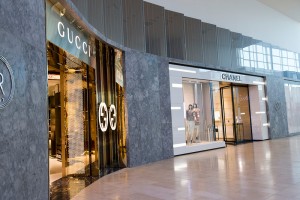Luxury fashion brands, a combination of high quality, glamour, celebrity, and attitude. With a few exceptions, it’s been an industry not traditionally associated with concerns about environmental impacts, human rights, and wellness, even while those trends have been sweeping through the mainstream consumer products sector.
Sustainability in luxury fashion brands is a mindset. The current tendency is that luxury fashion brands can no longer ignore sustainability.
It seems like there is a big gap between luxury and sustainability. However, since sustainability is becoming more and more popular and it might be a mandatory requirement for many corporates’ operation, from my point of view luxury and sustainability are one in the same. If we consider the origin of luxury which is defined as know-how, heritage, rarity, transmission, respect for materials and human rights and quality you arrive at a definition that mirrors that of sustainability.
Why sus is a mindset, few pressures are here. First, the direct pressure: the laws are changing. The report points to the passage of the Modern Slavery Act in the U.K. in 2015, which requires larger companies doing business in Britain to publish a board-approved, public annual slavery and human trafficking statement. This kind of law clearly drives much more transparency and tracking up the supply chain. And it’s a good thing, as 71% of U.K. retailers and suppliers think it’s likely there are slaves in their supply chain.
Second, the indirect and more powerful pressure: social norms are changing, starting with high-profile tastemakers. Celebrities are more invested than ever in sustainability. These celebrities are lending their clout to the social and environmental agenda. Given their prominence in the fashion and luxury worlds, their beliefs, statements, and demands on companies matter. On a larger scale, the expectations of companies are changing generationally.
Third, the rise in demand from investment communities for sustainable business models. For years, investors have focused on a company’s financial performance and determined if purchasing stock was worth it based on if the company was profitable. Now, sustainable investing strategies are growing, as investors are realising that performance is intertwined in future social and environmental impact.
Moreover, there’s the harsh reality of biophysical limits seriously compromising these companies’ ability to source their products. Luxury goods require digging up, growing, and processing materials throughout the value chain, and that’s all getting tougher. Climate change is changing water availability and crop production around the world. That affects cotton-based products and, cashmere and angora, for example, require a great deal of water to process.
Furthermore, the trend nowadays is also the time governments and world leaders taken action too. With the launch of the Sustainability Development Goals, COP 21, and the passing of the Modern Slavery Act, creating, maintaining and growing companies with a positive social and environmental impact will soon become a legal obligation.
This is the last journal for the Sustainability Marketing class, through the research whole term about sustainability in fashion industry, especially luxury fashion industry, I gained a lot from the current situation and the future prospect I am thinking. Overall, sustainability is a mindset fro luxury fashion brand, it will become a more popular term and a mandatory word for this industry.

